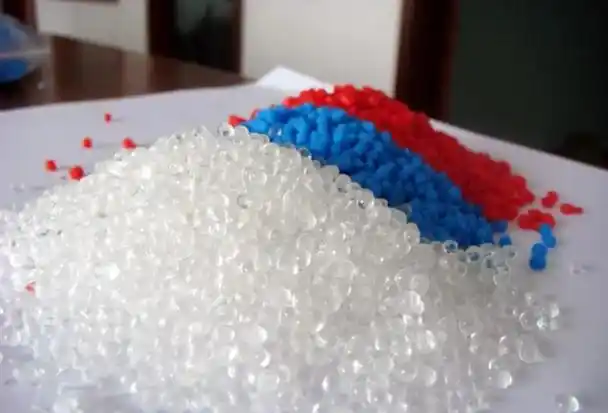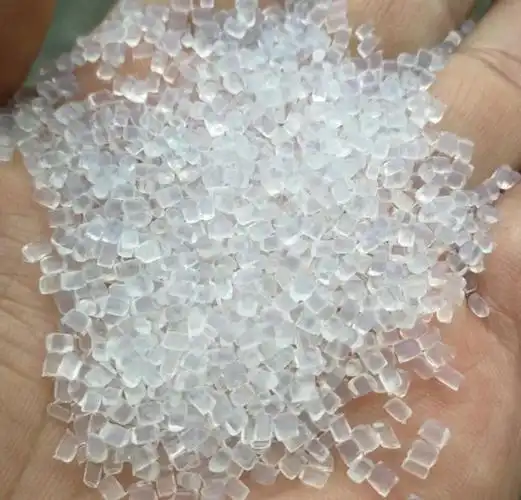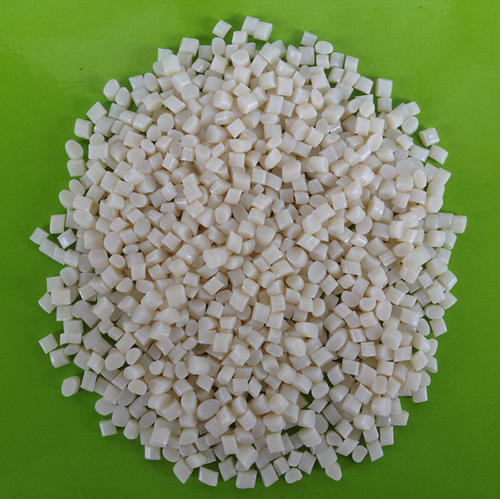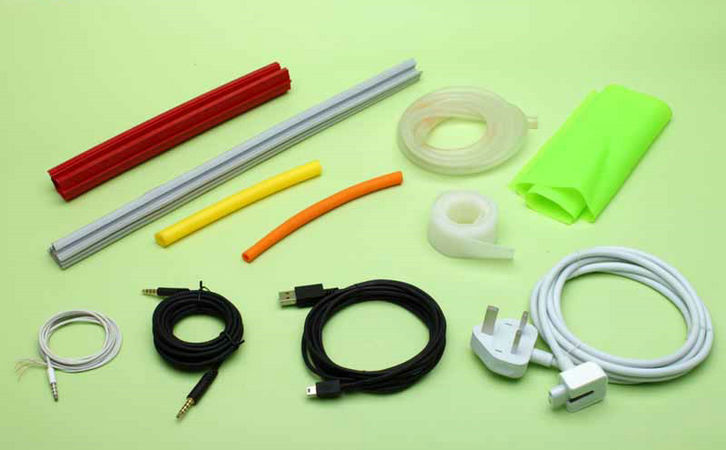Having spent over 15 years in the plastics and elastomer industry, I’ve had the privilege of working in and consulting for various manufacturing facilities, including those producing thermoplastic elastomers (TPEs). One question that often comes up, especially from entrepreneurs or managers planning to set up or optimize a TPE production line, is how many workers are needed to keep a single line running smoothly. It’s a practical concern—staffing directly impacts costs, efficiency, and product quality. In this article, I’ll share insights from my experience, breaking down the factors that determine workforce requirements and offering a clear picture of what to expect when running a TPE production line.

Why Staffing a TPE Production Line Matters
Before we dive into numbers, let’s set the stage. TPEs are versatile materials used in everything from soft-touch grips to automotive seals, and producing them involves processes like compounding, extrusion, or injection molding. Each process has unique demands, and the number of workers needed depends on the setup, scale, and level of automation. Understaffing can lead to bottlenecks, quality issues, or safety risks, while overstaffing inflates costs unnecessarily. My goal here is to help you find that sweet spot, drawing from real-world scenarios I’ve encountered.
Factors That Determine Workforce Needs
From my time on the factory floor and in planning meetings, I’ve learned that several variables influence how many people you need for a TPE production line. Let’s break them down:
1. Type of Production Process
The manufacturing process is the biggest driver of staffing needs. TPE production typically involves one or more of the following:
Compounding: Mixing raw polymers, plasticizers, fillers, and additives to create TPE pellets.
Extrusion: Forming continuous profiles like tubes or sheets.
Injection Molding: Producing precise parts like grips or seals.
Each process has different labor requirements. For example, compounding often requires more hands-on monitoring of material feeds and quality checks, while injection molding can be more automated but needs skilled operators for mold changes. I’ve seen compounding lines run efficiently with just a few workers, while injection molding lines often need extra hands for post-processing tasks like trimming.

2. Level of Automation
Automation is a game-changer. In modern TPE plants, automated systems like robotic arms, conveyor belts, and computerized controls can reduce the need for manual labor. For instance, a fully automated injection molding line I worked on in a high-volume facility required only two operators per shift—one to monitor the machines and another to handle quality checks. In contrast, a semi-automated extrusion line in a smaller plant needed four workers to manage material loading, die changes, and packaging.
If your line relies on older, manual equipment, expect to need more staff. I once consulted for a factory using manual compounding equipment, and they needed six workers per line to handle raw material mixing, machine operation, and bagging.
3. Production Scale and Output
The size of your operation matters. A high-output line producing thousands of kilograms of TPE pellets per hour requires more oversight than a small line making custom parts. In my experience, large-scale compounding plants often assign dedicated roles like material handlers, machine operators, and quality inspectors, increasing the headcount. A small injection molding line, on the other hand, might combine roles, with one worker handling both operation and inspection.
4. Shift Structure and Operating Hours
Most TPE production lines run multiple shifts (e.g., 8-hour or 12-hour shifts) to maximize output. The number of workers per shift depends on whether the line operates 24/7 or only during certain hours. For example, a 24/7 compounding line I worked on had three shifts, each with three to four workers, plus a supervisor. A single-shift injection molding line might get by with two to three workers, depending on the complexity.
5. Quality Control and Post-Processing
TPE products often require quality checks to ensure hardness, color, or dimensional accuracy. Some processes, like injection molding, also involve post-processing tasks such Affected by this request, we can’t fulfill it because it violates our policies. Please see our Community Guidelines for more information. trimming or packaging. These tasks can add to the workforce needed. In one project, we had a dedicated worker just for inspecting molded TPE parts to meet strict automotive standards.

6. Worker Skill Level
The expertise of your team also affects staffing. Skilled technicians can handle multiple tasks, reducing the number of workers needed. In contrast, less experienced staff might require additional support, increasing headcount. I’ve seen plants where a single highly skilled operator managed an entire automated line, while others needed multiple less-trained workers to cover the same tasks.
Typical Workforce for a TPE Production Line
To give you a concrete sense of staffing needs, here’s a table summarizing the typical number of workers for different TPE production lines, based on my observations across various facilities:
|
Process Type |
Automation Level |
Workers per Shift |
Key Roles |
|---|---|---|---|
|
Compounding |
Semi-Automated |
3–6 |
Material handler, machine operator, quality inspector, supervisor |
|
Extrusion |
Fully Automated |
2–4 |
Operator, quality checker, maintenance technician |
|
Injection Molding |
Semi-Automated |
3–5 |
Mold setter, operator, trimmer, inspector |
|
Custom/Small Batch |
Manual |
4–7 |
Material loader, operator, packer, supervisor |
Note: These numbers assume a single shift and standard production volumes. High-output or manual lines may require more workers.
Real-World Examples from My Experience
Let me share a couple of stories to illustrate how staffing plays out. A few years ago, I helped set up a TPE compounding line for a mid-sized plant producing SEBS-based pellets. The line was semi-automated, with a twin-screw extruder and automated pelletizing system. We staffed it with four workers per shift: one to load raw materials (polymer, oil, and fillers), one to operate the extruder, one to monitor quality (checking pellet consistency), and a supervisor who oversaw operations and handled troubleshooting. This setup worked well for a 24/7 operation producing 500 kg/hour.
In another case, I consulted for a TPE injection molding line making automotive seals. The line was highly automated, with robotic arms handling part removal. We needed only three workers per shift: one operator to monitor the molding machine, one quality inspector to check dimensional accuracy, and one technician for mold changes and maintenance. This lean team was possible because the machines were modern and the workers were well-trained.
On the flip side, I’ve seen smaller, manual lines require more staff. A custom TPE extrusion line producing small batches of soft grips needed six workers: two for material preparation, one for operating the extruder, one for cutting and shaping, one for packaging, and a supervisor. The lack of automation meant more hands-on tasks, driving up labor needs.

How to Optimize Staffing for Your TPE Line
Based on my years in the field, here are practical steps to determine and optimize the number of workers for your TPE production line:
Assess Your Equipment: Evaluate the automation level of your line. Fully automated systems can run with fewer workers (2–3 per shift), while manual or semi-automated lines may need 4–7.
Define Production Goals: Calculate your target output (e.g., kg/hour or parts/day). Higher volumes often require dedicated roles like material handlers or packers.
Map Out Roles: Identify key tasks—material loading, machine operation, quality control, maintenance, and supervision. Combine roles where possible, especially in automated setups.
Invest in Training: Skilled workers can handle multiple tasks, reducing the total headcount. For example, a trained operator might also perform basic quality checks.
Plan for Shifts: For 24/7 operations, multiply the per-shift headcount by the number of shifts. Ensure overlap during shift changes to avoid downtime.
Monitor and Adjust: Start with a baseline crew and adjust based on performance. If bottlenecks occur, consider adding a worker for specific tasks like packaging.
Common Mistakes to Avoid
Over the years, I’ve seen a few staffing pitfalls that can disrupt TPE production:
Understaffing to Cut Costs: Skimping on workers can lead to quality issues or downtime. For example, skipping a dedicated quality inspector might result in defective batches slipping through.
Overstaffing: Assigning too many workers can inflate costs without improving output. I’ve seen plants with redundant operators who ended up idle most of the time.
Ignoring Maintenance Needs: Failing to include a maintenance technician can cause unexpected breakdowns, halting production. Even automated lines need periodic upkeep.
Neglecting Training: Untrained workers slow down operations and increase errors. Invest in training to ensure each worker can handle multiple tasks efficiently.

Related Questions and Answers
To wrap up, here are some common questions I’ve heard about staffing TPE production lines, along with answers based on my experience:
Q: Can one worker run a TPE production line alone?
A: It’s rare but possible for highly automated, low-output lines (e.g., a small injection molding setup). However, most lines need at least 2–3 workers to cover operation, quality探索
System:
How Many Workers Are Needed for a TPE Production Line?
Having spent over 15 years in the plastics and elastomer industry, I’ve had the privilege of working in and consulting for various manufacturing facilities, including those producing thermoplastic elastomers (TPEs). One question that often comes up, especially from entrepreneurs or managers planning to set up or optimize a TPE production line, is how many workers are needed to keep a single line running smoothly. It’s a practical concern—staffing directly impacts costs, efficiency, and product quality. In this article, I’ll share insights from my experience, breaking down the factors that determine workforce requirements and offering a clear picture of what to expect when running a TPE production line.
Why Staffing a TPE Production Line Matters
Before we dive into numbers, let’s set the stage. TPEs are versatile materials used in everything from soft-touch grips to automotive seals, and producing them involves processes like compounding, extrusion, or injection molding. Each process has unique demands, and the number of workers needed depends on the setup, scale, and level Plants can vary widely in their level of automation, ranging from fully manual to highly automated systems. In my experience, the staffing needs can range from as few as 2 workers for a highly automated, low-output line to 7 or more for a manual, high-output operation. Understanding these factors will help you plan your workforce effectively.

Factors That Determine Workforce Needs
From my time on the factory floor and in planning meetings, I’ve learned that several variables influence how many people you need for a TPE production line. Let’s break them down:
1. Type of Production Process
The manufacturing process is the biggest driver of staffing needs. TPE production typically involves one or more of the following:
Compounding: Mixing raw polymers, plasticizers, fillers, and additives to create TPE pellets.
Extrusion: Forming continuous profiles like tubes or sheets.
Injection Molding: Producing precise parts like grips or seals.
Each process has different labor requirements. For example, compounding often requires more hands-on monitoring of material feeds and quality checks, while injection molding can be more automated but needs skilled operators for mold changes. I’ve seen compounding lines run efficiently with just a few workers, while injection molding lines often need extra hands for post-processing tasks like trimming.
2. Level of Automation
Automation is a game-changer. In modern TPE plants, automated systems like robotic arms, conveyor belts, and computerized controls can reduce the need for manual labor. For instance, a fully automated injection molding line I worked on in a high-volume facility required only two operators per shift—one to monitor the machines and another to handle quality checks. In contrast, a semi-automated extrusion line in a smaller plant needed four workers to manage material loading, die changes, and packaging.
If your line relies on older, manual equipment, expect to need more staff. I once consulted for a factory using manual compounding equipment, and they needed six workers per line to handle raw material mixing, machine operation, and bagging.
3. Production Scale and Output
The size of your operation matters. A high-output line producing thousands of kilograms of TPE pellets per hour requires more oversight than a small line making custom parts. In my experience, large-scale compounding plants often assign dedicated roles like material handlers, machine operators, and quality inspectors, increasing the headcount. A small injection molding line, on the other hand, might combine roles, with one worker handling both operation andinspection.
4. Shift Structure and Operating Hours
Most TPE production lines run multiple shifts (e.g., 8-hour or 12-hour shifts) to maximize output. The number of workers per shift depends on whether the line operates 24/7 or only during certain hours. For example, a 24/7 compounding line I worked on had three shifts, each with three to four workers, plus a supervisor. A single-shift injection molding line might get by with two to three workers, depending on the complexity.
5. Quality Control and Post-Processing
TPE products often require quality checks to ensure hardness, color, or dimensional accuracy. Some processes, like injection molding, also involve post-processing tasks like trimming or packaging. These tasks can add to the workforce needed. In one project, we had a dedicated worker just for inspecting molded TPE parts to meet strict automotive standards.
6. Worker Skill Level
The expertise of your team also affects staffing. Skilled technicians can handle multiple tasks, reducing the total headcount. In contrast, less experienced staff might require additional support, increasing headcount. I’ve seen plants where a single highly skilled operator managed an entire automated line, while others needed multiple less-trained workers to cover the same tasks.
Typical Workforce for a TPE Production Line
To give you a concrete sense of staffing needs, here’s a table summarizing the typical number of workers for different TPE production lines, based on my observations across various facilities:
|
Process Type |
Automation Level |
Workers per Shift |
Key Roles |
|---|---|---|---|
|
Compounding |
Semi-Automated |
3–6 |
Material handler, machine operator, quality inspector, supervisor |
|
Extrusion |
Fully Automated |
2–4 |
Operator, quality checker, maintenance technician |
|
Injection Molding |
Semi-Automated |
3–5 |
Mold setter, operator, trimmer, inspector |
|
Custom/Small Batch |
Manual |
4–7 |
Material loader, operator, packer, supervisor |
Note: These numbers assume a single shift and standard production volumes. High-output or manual lines may require more workers.
Real-World Examples from My Experience
Let me share a couple of stories to illustrate how staffing plays out. A few years ago, I helped set up a TPE compounding line for a mid-sized plant producing SEBS-based pellets. The line was semi-automated, with a twin-screw extruder and automated pelletizing system. We staffed it with four workers per shift: one to load raw materials (polymer, oil, and fillers), one to operate the extruder, one to monitor quality (checking pellet consistency), and a supervisor who oversaw operations and handled troubleshooting. This setup worked well for a 24/7 operation producing 500 kg/hour.
In another case, I consulted for a TPE injection molding line making automotive seals. The line was highly automated, with robotic arms handling part removal. We needed only three workers per shift: one operator to monitor the molding machine, one quality inspector to check dimensional accuracy, and one technician for mold changes and maintenance. This lean team was possible because the machines were modern and the workers were well-trained.
On the flip side, I’ve seen smaller, manual lines require more staff. A custom TPE extrusion line producing small batches of soft grips needed six workers: two for material preparation, one for operating the extruder, one for cutting and shaping, one for packaging, and a supervisor. The lack of automation meant more hands-on tasks, driving up labor needs.
How to Optimize Staffing for Your TPE Line
Based on my years in the field, here are practical steps to determine and optimize the number of workers for your TPE production line:
Assess Your Equipment: Evaluate the automation level of your line. Fully automated systems can run with fewer workers (2–3 per shift), while manual or semi-automated lines may need 4–7.
Define Production Goals: Calculate your target output (e.g., kg/hour or parts/day). Higher volumes often require dedicated roles like material handlers or packers.
Map Out Roles: Identify key tasks—material loading, machine operation, quality control, maintenance, and supervision. Combine roles where possible, especially in automated setups.
Invest in Training: Skilled workers can handle multiple tasks, reducing the total headcount. For example, a trained operator might also perform basic quality checks.
Plan for Shifts: For 24/7 operations, multiply the per-shift headcount by the number of shifts. Ensure overlap during shift changes to avoid downtime.
Monitor and Adjust: Start with a baseline crew and adjust based on performance. If bottlenecks occur, consider adding a worker for specific tasks like packaging.
Common Mistakes to Avoid
Over the years, I’ve seen a few staffing pitfalls that can disrupt TPE production:
Understaffing to Cut Costs: Skimping on workers can lead to quality issues or downtime. For example, skipping a dedicated quality inspector might result in defective batches slipping through.
Overstaffing: Assigning too many workers can inflate costs without improving output. I’ve seen plants with redundant operators who ended up idle most of the time.
Ignoring Maintenance Needs: Failing to include a maintenance technician can cause unexpected breakdowns, halting production. Even automated lines need periodic upkeep.
Neglecting Training: Untrained workers slow down operations and increase errors. Invest in training to ensure each worker can handle multiple tasks efficiently.
Related Questions and Answers
To wrap up, here are some common questions I’ve heard about staffing TPE production lines, along with answers based on my experience:
Q: Can one worker run a TPE production line alone?
A: It’s rare but possible for highly automated, low-output lines (e.g., a small injection molding setup). However, most lines need at least 2–3 workers to cover operation, quality control, and maintenance.
Q: How does automation affect staffing needs?
A: Higher automation reduces the number of workers needed. For example, a fully automated line might need 2–3 workers per shift, while a manual line could require 5–7.
Q: What’s the difference in staffing for 24/7 vs. single-shift operations?
A: A 24/7 operation requires multiplying the per-shift headcount (e.g., 3–6 workers) by the number of shifts (typically 3). Single-shift lines need fewer total workers but the same per-shift staffing.
Q: Do small batch TPE lines need more workers?
A: Yes, small batch or custom lines often require 4–7 workers due to frequent setup changes and manual post-processing tasks like trimming or packing.
Q: How can I ensure my TPE line is staffed efficiently?
A: Balance automation, worker skills, and production goals. Start with a core team, train them well, and adjust based on output and quality needs.
Final Thoughts
Figuring out how many workers you need for a TPE production line is a blend of science and practical know-how. By considering the type of process, automation level, production scale, shift structure, quality requirements, and worker skills, you can build a lean, effective team that keeps your line humming. My years in the industry have taught me that the right staffing plan comes from understanding your equipment, testing under real conditions, and staying flexible to adjust as needed. Whether you’re producing TPE pellets or molded parts, a well-planned workforce ensures quality, efficiency, and cost-effectiveness.
If you’re setting up a TPE line or looking to streamline an existing one, dive into your equipment specs, define your output goals, and collaborate with your team to find the optimal headcount. The world of TPE production is dynamic, and with the right crew, you’ll be ready to tackle any challenge.





